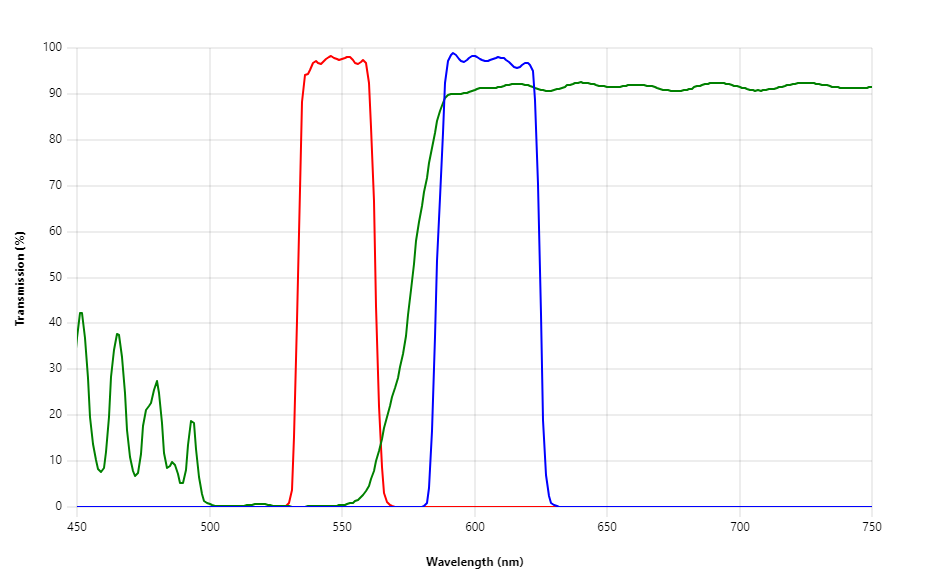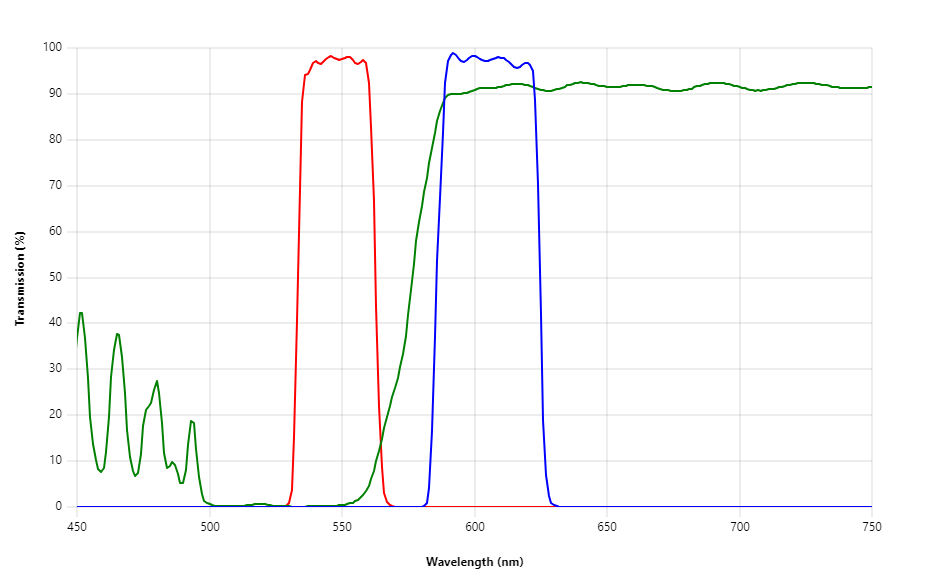Introduction
We’re glad you’re here to learn more about Tritc filters and how they can improve fluorescence imaging for scientific research. In this essay, we will explore the world of Tritc filters, including their uses, advantages, and contributions to the development of numerous academic disciplines. This article will educate you on Tritc filters and their importance in the field of scientific investigation, whether you are a researcher, scientist, or simply interested in fluorescence imaging.
What is a Tritc Filter?
An optical filter used in fluorescence microscopy is called a Tritc filter, often referred to as a tetramethylrhodamine isothiocyanate filter. It is made specifically to be able to detect and transmit light generated by fluorochromes with red-colored emission. Numerous scientific fields, including biology, biochemistry, medicine, and materials research, frequently use tritc filters.

The Function of a Tritc Filter
Tritc filters are essential in fluorescence microscopy because they selectively filter out undesirable excitation light while letting the fluorochrome’s emission light pass through. This selective filtering improves the fluorochrome’s contrast and resolution, leading to crisper and more precise fluorescence imaging. Tritc filters enable researchers to precisely observe and examine particular cellular or molecular structures by isolating the emitted light.
Applications of Tritc Filters
Tritc filters have a wide range of uses in a variety of scientific disciplines, which helps to advance research and make discoveries. Let’s look at some of the main applications for Tritc filters.
1. Cellular Biology
Tritc filters are employed in cellular biology to examine cellular processes and structures with great specificity and precision. Fluorochromes that emit in the red spectrum can be used to identify particular molecules or parts of cells for research purposes. They may selectively observe and research these labeled structures using a Tritc filter, offering important insights into cellular activity and function.
2. Immunohistochemistry
In pathology and medical research, immunohistochemistry is a common method for examining the presence and distribution of particular proteins or antigens in tissue samples. In immunohistochemical staining methods, tritc filters are used to identify and see the bound antibodies. This makes it possible to locate target molecules within the tissue and identify them, which helps with illness diagnosis, prognosis, and treatment.
3. Live Cell Imaging
Researchers can watch and follow cellular processes in real time thanks to live cell imaging. Tritc filters enable researchers to track dynamic biological processes like cell division, migration, and signaling pathways. They do this by combining them with other fluorescent markers. Tritc filters are essential instruments for understanding the complexities of live cell behavior because of their high sensitivity and specificity.
4. Neuroscience
Neuroscience heavily utilizes fluorescence microscopy to study the composition and operation of the brain. Tritc filters help visualize particular neuronal populations, brain circuits, and synaptic connections when used in conjunction with other fluorochromes. Neuroscientists can better understand brain structure, neuronal activity, and the mechanisms underlying various neurological illnesses by using Tritc filters.
The Benefits of Using Tritc Filters (Continued)
1. Enhanced Sensitivity
High sensitivity to fluorochromes emanating in the red is demonstrated by tritc filters. This increased sensitivity enables the observation of low-abundance targets and subtle cellular processes that would otherwise be difficult to see. Researchers can now identify and capture very faint fluorescence signals. Fluorescence imaging tests are more accurate and reliable thanks to Tritc filters’ increased sensitivity.
2. Improved Signal-to-Noise Ratio
Minimizing background noise while boosting the signal from the target fluorochrome is one of the difficulties in fluorescence imaging. Tritc filters are essential for getting the best signal-to-noise ratio because they selectively transmit the light that is being produced while effectively blocking the light that is being excited and other kinds of background noise. As a result, visuals are clearer, sharper, and have better contrast and less interference, which allows for more precise data interpretation.
3. Versatility and Compatibility
Tritc filters work with a variety of imaging systems and fluorescence microscopy methods. They can be easily included into a variety of microscope setups, such as widefield, confocal, and multiphoton ones. Tritc filters are a useful tool in a variety of scientific applications due to their adaptability, which enables researchers to modify them to their own experimental requirements.
4. Easy Integration with Multi-Color Imaging
Multiple fluorochromes are frequently employed in fluorescence imaging research to mark various cellular structures or biomolecules at once. Tritc filters can be used in conjunction with other filters designed for particular fluorochromes to produce multi-color imaging. The capacity to observe and analyze many targets within the same sample enables researchers to conduct thorough and in-depth examinations.
Conclusion
Tritc filters are essential tools for fluorescence imaging, advancing scientific investigation in a variety of fields. Tritc filters enhance the sensitivity, contrast, and resolution of fluorescence imaging by selectively blocking undesired excitation light and transmitting fluorochrome-emitted light. They are useful in many different domains, including cellular biology, immunohistochemistry, live cell imaging, and neurology.
Tritc filters have several advantages, such as increased sensitivity, a better signal-to-noise ratio, versatility, compatibility with various imaging systems, and simplicity of multi-color imaging integration. These benefits add to the fluorescence imaging studies’ precision, dependability, and thoroughness, allowing researchers to learn important things about cellular functions, molecular connections, and disease mechanisms.
The quality and breadth of your investigations using fluorescence imaging can be significantly improved by incorporating Tritc filters into your research toolkit. Scientists and researchers can make new discoveries, expand scientific understanding, and improve society by utilizing the power of Tritc filters.

Frequently Asked Questions (FAQs)
FAQ 1: What does Tritc stand for?
Tetramethylrhodamine isothiocyanate, also known as tritc, is the fluorochrome that emits in the red spectrum. Tetramethylrhodamine isothiocyanate and other fluorochromes emit light that is specifically tailored to be detected and transmitted by tric filters.
FAQ 2: How do Tritc filters enhance fluorescence imaging?
Tritc filters let fluorochromes’ output light pass through while selectively blocking undesirable excitation light. Tritc filters improve the contrast and resolution of the fluorochrome by isolating the emitted light, leading to superior fluorescence imaging with increased sensitivity and clarity.
FAQ 3: Are Tritc filters compatible with different microscope systems?
Yes, Tritc filters are very adaptable and work well with a variety of imaging systems and fluorescence microscopy methods. Widefield, confocal, and multiphoton microscopy setups are just a few of the different microscope configurations they can be smoothly integrated into.
FAQ 4: Can Tritc filters be used for live cell imaging?
Yes, a lot of live cell imaging research use Tritc filters. Tritc filters provide real-time monitoring and visualization of dynamic cellular processes when paired with the right fluorochromes, offering important insights into cell behavior and function.
FAQ 5: How can Tritc filters benefit neuroscience research?
Tritc filters are essential in neuroscience research for displaying certain neuronal populations, brain circuits, and synaptic connections. Researchers can better comprehend brain structure, neuronal activity, and the mechanisms underlying neurological illnesses by combining Tritc filters with other fluorochromes.
FAQ 6: Where can I find Tritc filters?
Reputable providers and producers of microscopy tools and accessories sell tritc filters. It is advised to speak with a local provider of scientific equipment or look up trustworthy internet marketplaces that specialize in microscopy products.
